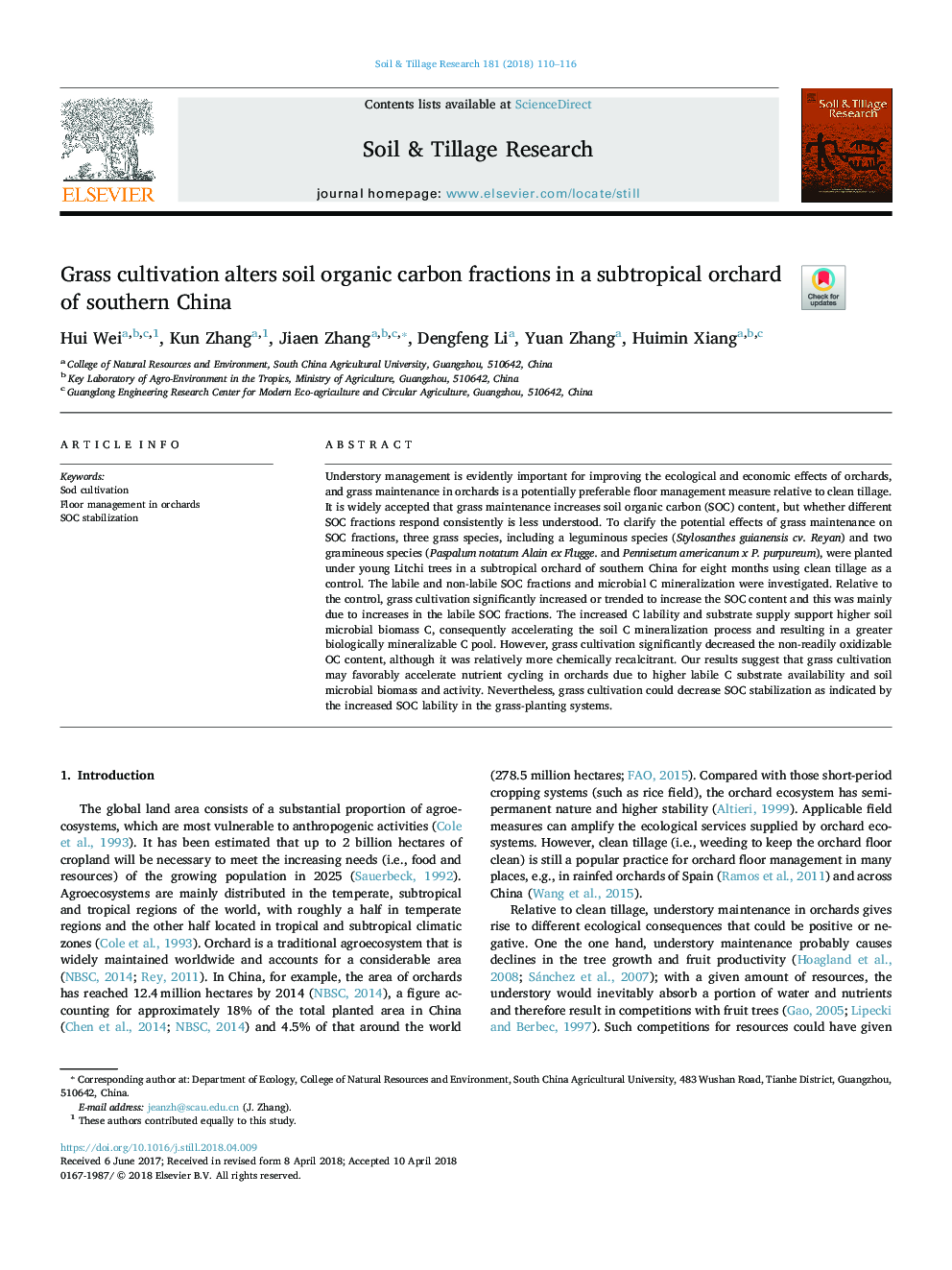| Article ID | Journal | Published Year | Pages | File Type |
|---|---|---|---|---|
| 6773023 | Soil and Tillage Research | 2018 | 7 Pages |
Abstract
Understory management is evidently important for improving the ecological and economic effects of orchards, and grass maintenance in orchards is a potentially preferable floor management measure relative to clean tillage. It is widely accepted that grass maintenance increases soil organic carbon (SOC) content, but whether different SOC fractions respond consistently is less understood. To clarify the potential effects of grass maintenance on SOC fractions, three grass species, including a leguminous species (Stylosanthes guianensis cv. Reyan) and two gramineous species (Paspalum notatum Alain ex Flugge. and Pennisetum americanum x P. purpureum), were planted under young Litchi trees in a subtropical orchard of southern China for eight months using clean tillage as a control. The labile and non-labile SOC fractions and microbial C mineralization were investigated. Relative to the control, grass cultivation significantly increased or trended to increase the SOC content and this was mainly due to increases in the labile SOC fractions. The increased C lability and substrate supply support higher soil microbial biomass C, consequently accelerating the soil C mineralization process and resulting in a greater biologically mineralizable C pool. However, grass cultivation significantly decreased the non-readily oxidizable OC content, although it was relatively more chemically recalcitrant. Our results suggest that grass cultivation may favorably accelerate nutrient cycling in orchards due to higher labile C substrate availability and soil microbial biomass and activity. Nevertheless, grass cultivation could decrease SOC stabilization as indicated by the increased SOC lability in the grass-planting systems.
Related Topics
Physical Sciences and Engineering
Energy
Renewable Energy, Sustainability and the Environment
Authors
Hui Wei, Kun Zhang, Jiaen Zhang, Dengfeng Li, Yuan Zhang, Huimin Xiang,
